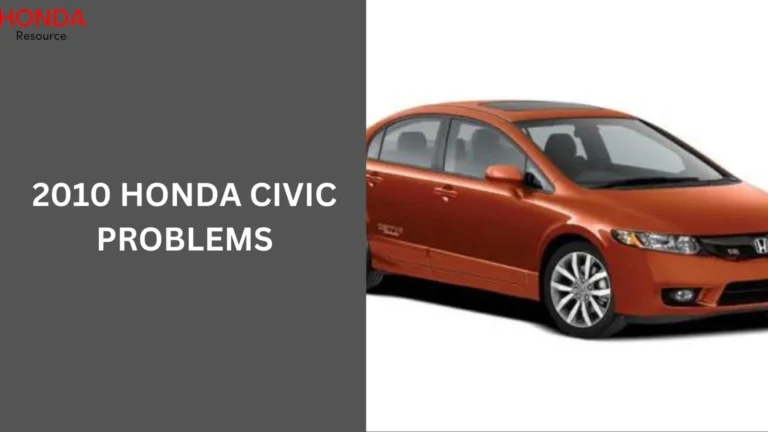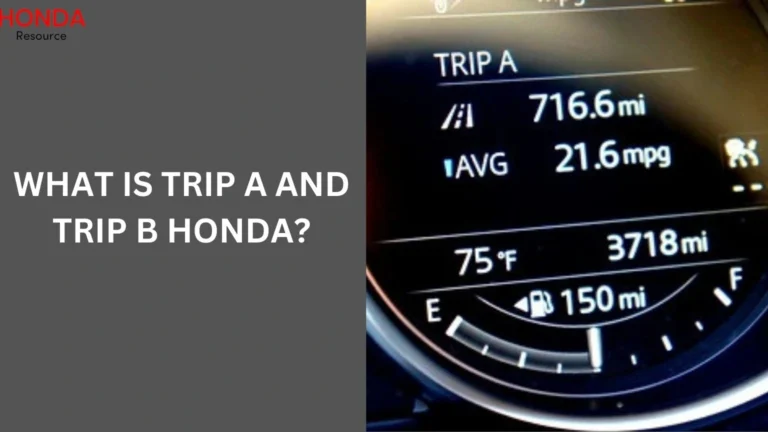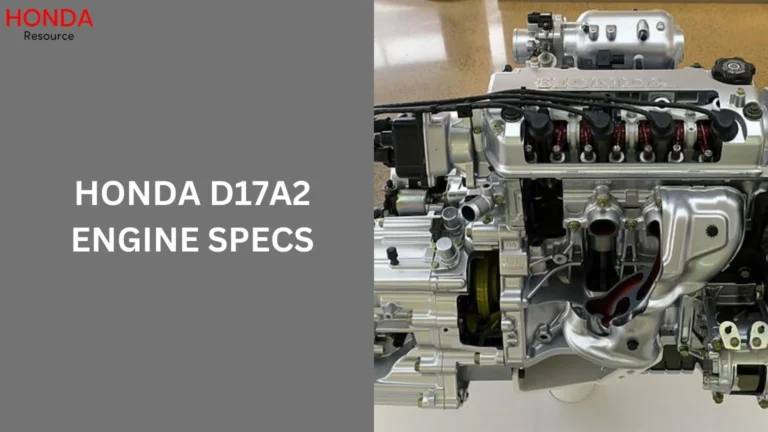Honda CRV Electric Parking Brake Problem (Troubleshooting) of 2024
Electric parking brakes (EPB) have become a standard feature in modern vehicles like the Honda CRV, offering convenience and safety. However, issues can arise, affecting their functionality and reliability.
Honda CRV Electric Parking Brake Problem, This article delves into common problems associated with the Honda CRV’s electric parking brake, its causes, troubleshooting steps, and preventive maintenance tips.
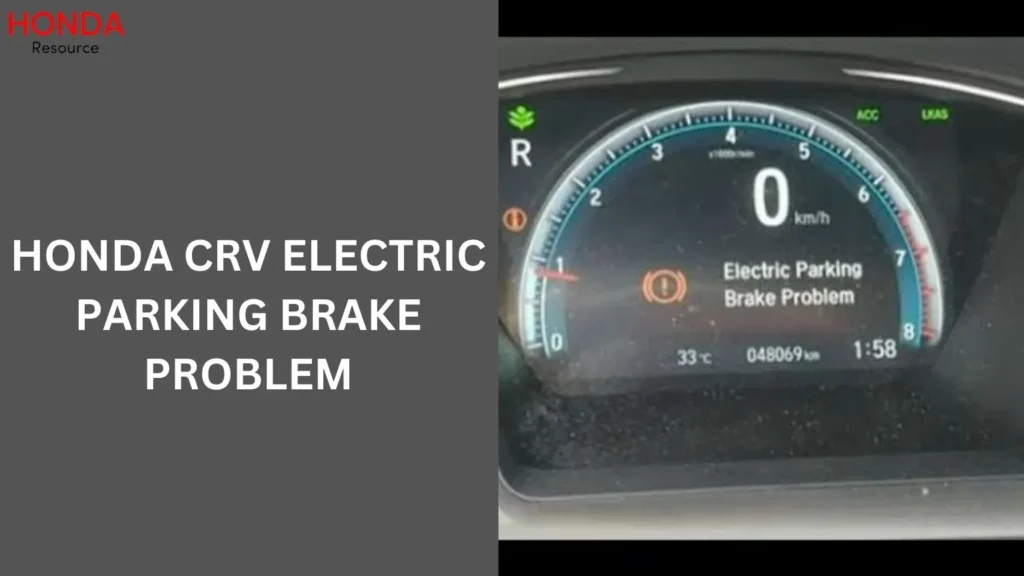
Introduction to Honda CRV Electric Parking Brake Issue
In recent years, Honda has integrated electric parking brakes into models like the CRV to replace traditional handbrake systems. The EPB is designed to engage and disengage at the touch of a button, enhancing ease of use and driver comfort.
Common Issues with Honda CRV Electric Parking Brake

When it comes to the Honda CRV’s electric parking brake (EPB), several common issues can arise, affecting its performance and reliability. Understanding these problems can help you diagnose and address them promptly, ensuring the safety and convenience of your vehicle.
EPB Not Engaging/Disengaging Properly
One of the most frequent issues with the Honda CRV’s EPB is its failure to engage or disengage properly. You might find that pressing the EPB button doesn’t activate the brake as expected, or the brake remains engaged even after you attempt to release it. This issue can be particularly frustrating and may pose a safety risk if the vehicle cannot be securely parked.
EPB Warning Light on Dashboard
The EPB warning light on the dashboard is another common problem. This light indicates that there is a malfunction or error within the EPB system. The warning light can illuminate for various reasons, such as sensor failures, wiring issues, or problems with the EPB motor. When this light appears, it’s essential to address the underlying issue to ensure the EPB functions correctly.
EPB Stuck in One Position
The EPB may sometimes become stuck in either the engaged or disengaged position. When stuck in the engaged position, you won’t be able to move your vehicle, while being stuck in the disengaged position means you won’t have the parking brake’s safety benefit. This issue can arise due to mechanical failures, electronic malfunctions, or debris obstructing the EPB mechanism.
Causes of Electric Parking Brake Problems in Honda CRV
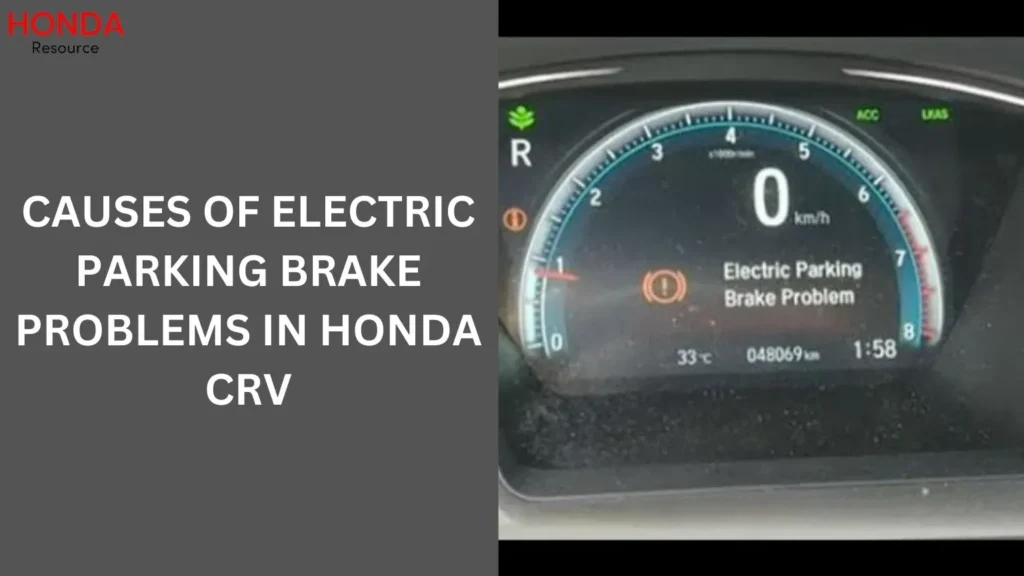
Understanding the root causes of electric parking brake (EPB) issues in your Honda CRV can help you address them effectively and maintain the system’s reliability. Here are some common causes:
Electrical System Faults
The EPB in your Honda CRV relies heavily on the vehicle’s electrical system. Any faults in this system, such as wiring issues, blown fuses, or malfunctioning sensors, can disrupt the EPB’s operation. For instance, if there’s a poor connection or a short circuit, the EPB may fail to engage or disengage as needed.
Brake Caliper Issues
The brake calipers play a crucial role in the EPB system. Problems with the calipers, such as wear and tear, corrosion, or damage, can hinder the proper engagement of the parking brake. Over time, calipers may become less effective, leading to difficulties in securing the vehicle when parked.
EPB Motor Malfunction
The EPB motor is responsible for engaging and disengaging the brake. If this motor fails, the EPB won’t function correctly. Motor malfunctions can occur due to electrical failures, mechanical wear, or exposure to harsh conditions. A failing EPB motor may produce unusual noises or fail to respond when you press the EPB button.
Software Glitches
Like many modern vehicle systems, the EPB in the Honda CRV is controlled by software. Software glitches or outdated firmware can lead to erratic behavior of the EPB system. These issues might cause the EPB warning light to illuminate or prevent the system from operating as intended.
Wear and Tear of EPB Components
Over time, various components of the EPB system, including switches, connectors, and actuators, can wear out. Regular use and exposure to environmental factors can degrade these components, resulting in EPB malfunctions. Routine maintenance and timely replacement of worn parts can help mitigate these issues.
Debris and Corrosion
Debris and corrosion can obstruct the EPB mechanism, causing it to stick or malfunction. Dirt, dust, and moisture can accumulate in the EPB components, leading to blockages or rust. Ensuring that the EPB system is clean and free from debris is crucial for its proper functioning.
Troubleshooting Honda CRV Electric Parking Brake Problems
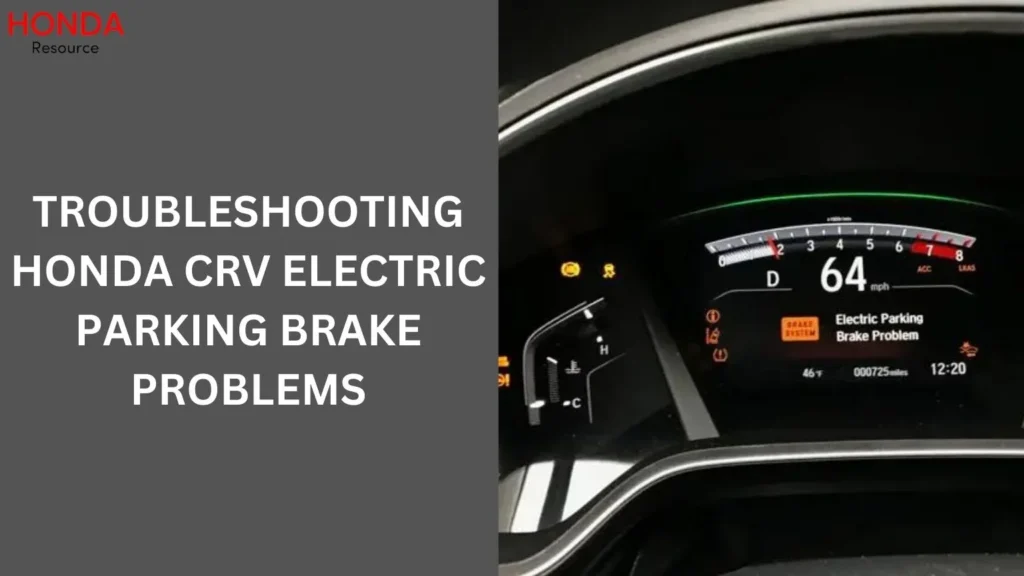
When your Honda CRV’s electric parking brake (EPB) encounters issues, troubleshooting the problem systematically can help you identify the root cause and find a solution. Here are some steps to troubleshoot common EPB problems:
Checking EPB Switch and Connections
- Inspect the EPB Switch: Start by examining the EPB switch on the dashboard. Ensure that it is not physically damaged or stuck. Press the switch a few times to see if it responds correctly.
- Check Electrical Connections: Inspect the wiring and connectors associated with the EPB switch. Look for loose, corroded, or damaged wires that might be interrupting the signal to engage or disengage the brake.
Testing EPB Motor Functionality
- Listen for Operational Sounds: When you press the EPB switch, listen for any sounds from the EPB motor. A healthy motor should produce a whirring or clicking noise. If you hear nothing, the motor might be faulty.
- Use Diagnostic Tools: If available, use a diagnostic tool to scan the EPB system for error codes. This can help pinpoint specific issues with the motor or other components.
- Direct Testing: If you’re comfortable with hands-on troubleshooting, you can test the EPB motor directly by applying power to it. Disconnect the motor and connect it to a power source to see if it operates. Be cautious and follow safety guidelines when performing this test.
Inspecting Brake Calipers and Pads
- Visual Inspection: Inspect the brake calipers for signs of wear, damage, or corrosion. Ensure that the calipers are moving freely and not seized. Check the brake pads for wear and tear as well.
- Clean and Lubricate: Clean the calipers and lubricate the moving parts to ensure smooth operation. Removing debris and rust can improve the functionality of the EPB.
- Check for Obstructions: Ensure that no foreign objects are obstructing the movement of the calipers or pads, which can prevent the EPB from engaging or disengaging properly.
Resetting the EPB System
- System Reset: Sometimes, performing a system reset can clear minor glitches and restore the EPB’s functionality. Refer to your owner’s manual for specific instructions on how to reset the EPB system in your Honda CRV.
- Battery Disconnect: Disconnect the vehicle’s battery for a few minutes and then reconnect it. This can reset the vehicle’s electronic systems, including the EPB.
Consulting a Professional
- Seek Expert Help: If the above steps do not resolve the issue, it’s best to consult a qualified technician or visit a Honda service center. Professionals have the necessary tools and expertise to diagnose and repair complex EPB problems.
- Regular Maintenance: Ensure that your EPB system is regularly maintained by professionals. Regular inspections can catch potential issues before they become major problems.
Steps to Fix Honda CRV Electric Parking Brake Issues
If troubleshooting reveals issues, follow these steps to address EPB problems effectively:
- Resetting the EPB system: Perform a system reset to recalibrate the EPB and clear any error codes.
- Cleaning EPB components: Clean EPB components to remove debris or corrosion that could impair functionality.
- Replacing faulty EPB parts: Replace malfunctioning EPB components, such as sensors or the EPB motor, to restore proper operation.
Preventive Maintenance Tips for Honda CRV EPB
To minimize EPB issues and ensure reliable performance:
- Regular inspection of EPB system: Schedule periodic checks to inspect EPB components for signs of wear or damage.
- Proper use and care of EPB: Operate the EPB according to manufacturer guidelines to prevent premature wear and ensure longevity.
People also ask
What does it mean when my Honda says electric parking brake problem?
When your Honda says “electric parking brake problem,” it means there’s an issue with the vehicle’s electric parking brake (EPB) system. This could be due to electrical faults, sensor failures, wiring issues, or problems with the EPB motor or brake calipers. It’s important to diagnose and address the problem promptly to ensure the parking brake functions correctly for safety and convenience.
How do you reset the electronic parking brake on a Honda CRV?
To reset the electronic parking brake (EPB) on a Honda CRV, follow these steps:
Turn off the ignition and then turn it back on without starting the engine.
Press and hold the EPB switch in the release position.
While holding the EPB switch, press the brake pedal and hold it.
After about 10 seconds, the EPB light should flash, indicating the reset process has started.
Release the EPB switch and the brake pedal.
Turn off the ignition, then restart the vehicle and check if the EPB warning light is off.
What is the electronic brake system problem on a Honda CRV?
The electronic brake system problem on a Honda CRV typically refers to issues within the vehicle’s electric parking brake (EPB) system. This could involve faults such as malfunctioning EPB motors, electrical wiring issues, sensor failures, or problems with the brake calipers. When this problem occurs, the EPB may not engage or disengage properly, and a warning light may appear on the dashboard. It’s important to diagnose and fix these issues to ensure safe and reliable operation of the parking brake.
How do you turn off the electric parking brake on a Honda CRV?
To turn off the electric parking brake on a Honda CRV, follow these steps:
Turn on the ignition.
Press the brake pedal firmly.
Push down on the EPB switch located on the center console.
Conclusion
In Conclusion, Maintaining the electric parking brake in your Honda CRV is essential for vehicle safety and convenience. By understanding common issues, their causes, and proactive maintenance strategies, you can ensure your EPB operates reliably for years to come.

I’m Henry Leclerc, a passionate professional car mechanic with a deep love for Honda cars. With years of hands-on experience and extensive knowledge about all Honda car models, I’ve created this website to share my expertise and help fellow Honda enthusiasts keep their vehicles in top-notch condition.

